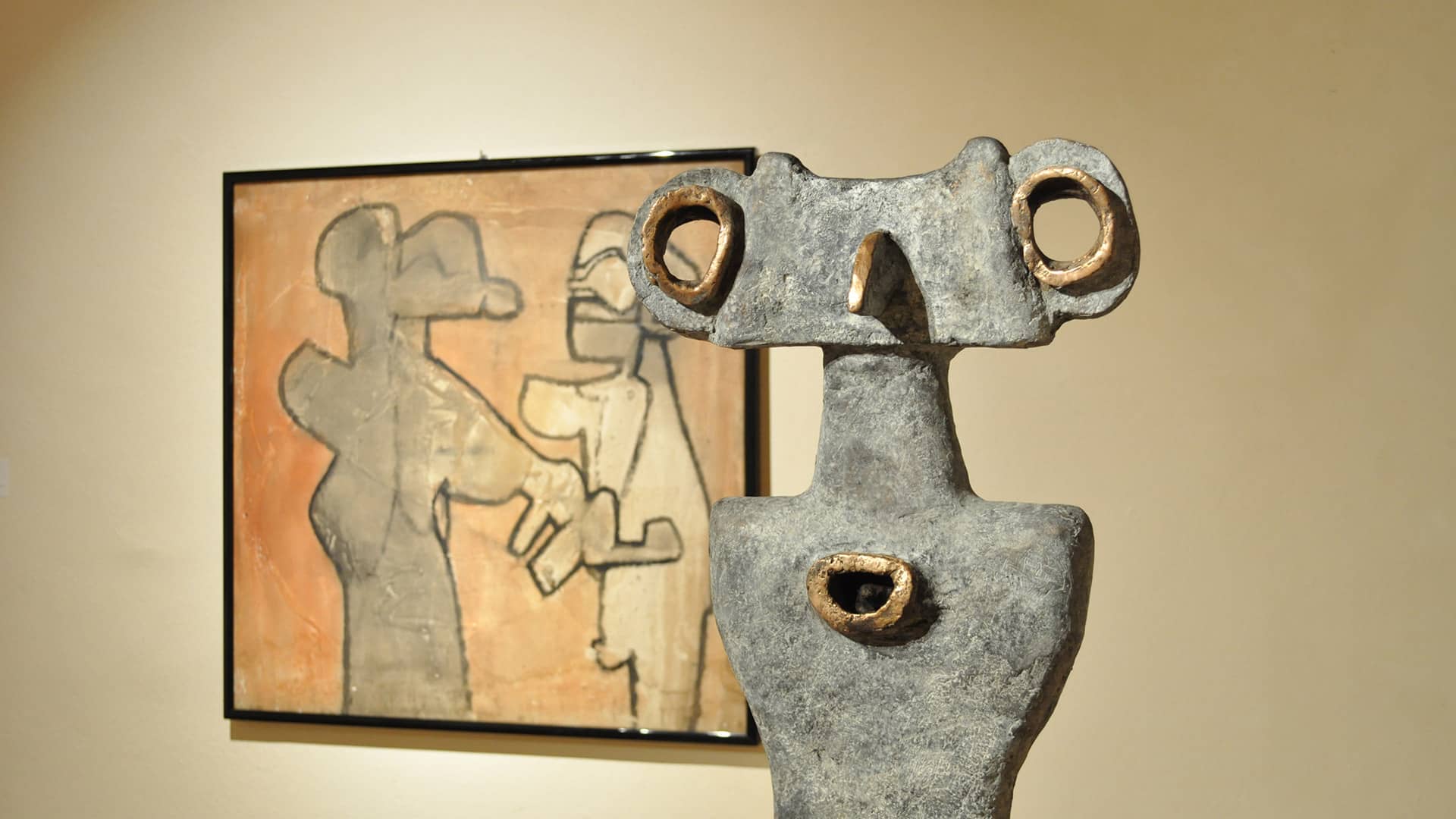After important exhibitions during the most recent editions of the Venice Biennale, Roberto Sebastian Matta returns to Galleria d'Arte Maggiore g.a.m. with a new show in its venue in Bologna. The paintings, the mixed media and the sculptures made in bronze selected by Franco and Roberta Calarotagive a complete portrait of an artist who deeply and repeatedly revolutionized the international artistic scene he entered in contact with, absorbing the different cultures he met on his way. From his native land, Chile, Matta moved to Paris providing a major stimulus for the development of Surrealism. Then he moved to New York where he influenced the younger generation of artists that would have then given birth to American Abstract Expressionism. The memory of the past – from the legendary suggestions of the pre-Columbian lands to the Etruscan world passing through Oceanic and primitive art – is permeated with visions of a futuristic future, creating an imagined dimension which is, however, always connected with the social and political reality the artist was deeply involved in.
Moving to Paris at the beginning of the 1930s marked a significant moment in the development of Roberto Sebastian Matta's poetics. The artist (Santiago, Chile, 1911 – Civitavecchia 2002) immediately entered into contact with the city's outstanding personalities, like Federico García Lorca, Salvador Dalí andAndrè Breton. The latter introduced Matta to Surrealism and the Chilean artist greatly promoted the movement becoming one of its most interesting voices. Leaving the idea of real architecture behind –which was the subject of Matta's first unitary studies – the artist entered the complexity of mental architecture, walking in the places of knowledge and inviting us to enter another dimension where the interiority of man takes shape. He started to realize the so-called “inscapes”, fantastic interior landscapes, or“psychological morphologies” from 1938 when he took part in the Exposition International du Surrèalisme. At the outbreak of the Second World War, he found refuge in New York, following an invitation from Duchamp. His fantastic images showing anthropomorphic figures will strongly impress the young artists of the famous New York School, like Pollock, Motherwell and Rothko. Matta's painting anticipated many aspects of their style.
Among the oils selected for the exhibition, we have to mention La lumière de l'edore. It was realized in 1958 when Matta was already a universal artist with exhibitions in the most important museums in Europe and the USA. The MoMA in New York organized a great retrospective of the artist in 1957. On the canvas, the signs, the colours and the figures suggest questions that don't have a unique interpretation, replying to the artist's will to show the mystery of our mind. The light tones are different from the darker ones often chosen by the artist during the previous decade, torn by the social and political upheaval of the war which left a strong impression on him. In the selection of the mixed media on the paper included in the exhibition, the theme of the car - often used by the artist as a provocation against consumerism - starts to appear. The part of the exhibition dedicated to the sculptures in bronze is very interesting. Times, cultures and suggestions merge together creating a timeless space inhabited by totems that seem emerging from ancient civilizations and mythological characters from an imagined world.
There has been a growing interest around Matta's sculptural production lately from collectors and critics, as it is testified by the exhibition in the evocative Garden of Palazzo Soranzo Cappello, headquarter of the Soprintendenza of the Venice, included among the official collateral events of the 56. Venice Biennale in 2015. Previously, on the occasion of the Biennial in 2013, the Fondazione Querini Stampalia hosted an unprecedented exhibition of Mattatogether with his sons Gordon Matta-Clark and Pablo Echaurren. Both of the shows were organized by Gallerie d'Arte Maggiore g.a.m. and follow other important exhibitions since the 1980s. In those years the founders of the Gallery, Franco and Roberta Calarota, became friends with the artist and started a personal relationship with him, enriched by long talks at the “Bandita”, a former monastery at the gates of Tarquiniawhich Matta had elected as his last home-atelier.
Read more +
Read less -







 Sign in with email
Sign in with email




